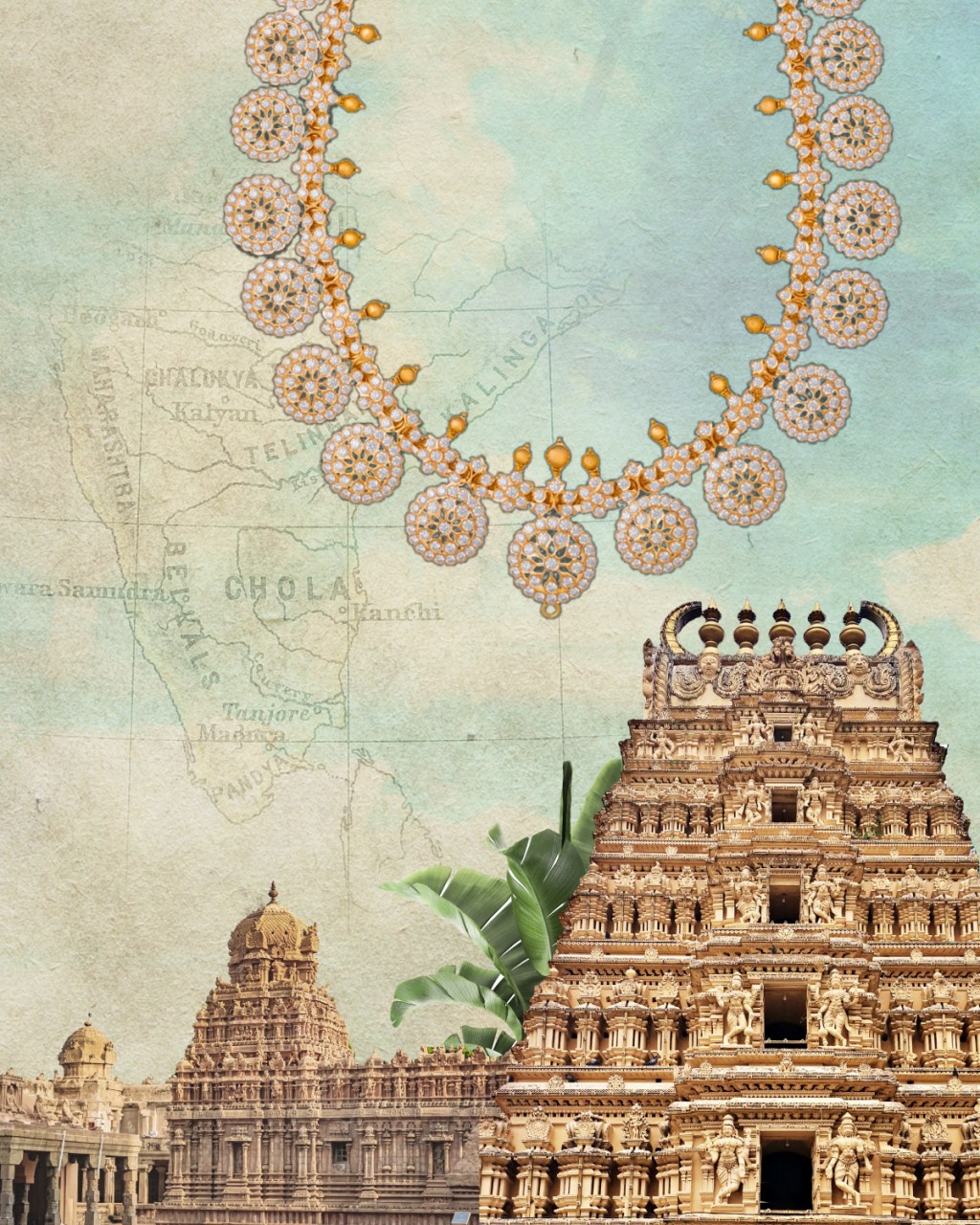A Diamond Story You Can’t Miss – The Indore Pears
Credits: Chaumet, Artist’s Rendition
Nothing compares to the grandeur and glamour of the maharajas of India. The image of an Indian royal decked in natural diamonds, presiding over his court, or leading a procession on an equally bejewelled elephant remains seared in the annals of history. In the absence of modern communication systems, a royal procession conveyed a kingdom’s financial strength and underlined the role of the raja [king] as the leader, protector, ordained by an obscure divine right.
During Britain’s colonial rule of India, they adopted a policy of ‘indirect control’ in many princely states, where rajas and maharajas were permitted to retain their titles, privileges, and territories in exchange for their allegiance, economic support, and relinquishment of their kingdom’s administration to their colonial overlords.
Over time, most Indian royals and their colonial masters developed a symbiotic relationship, with later generations of princes and princesses studying abroad, resulting in a unique cultural amalgamation, and the creation of the most magnificent natural diamond jewellery collections in the world.
Jewellery historian, curator, and author, Dr Usha Balakrishnan, explains, “Two historical events may have played a role in encouraging Indian royalty to assimilate European and British culture. The first being the British annexation of Maharaja Ranjit Singh’s kingdom of Punjab in 1849, despite their documented alliance in the Treaty of Amritsar. The second would have been the failure of the Indian mutiny of 1857, the first nationwide uprising against British rule in India. Both events probably made Indian maharajas insecure. This may have led to an embracing of all things European, such as sending the younger generation of royals to study abroad, and marrying women of foreign antecedents, influencing tastes in fashion and jewellery.”
Birth of the ‘Indore Pears’ Diamonds
As the story goes, on 26th February 1926, Tukoji Rao Holkar III, Maharaja of Indore, had to abdicate his throne in favour of his seventeen-year-old son, Yashwantrao Holkar II. The British government compelled him to leave Indore permanently because of his alleged involvement in the murder of Mumtaz Begum in Mumbai, a dancing girl at his court. After the abdication, Tukoji Rao Holkar III met Nancy Ann Miller in Europe, a rich young American, and married her in 1928 making her Maharani Shamista Devi Holkar.
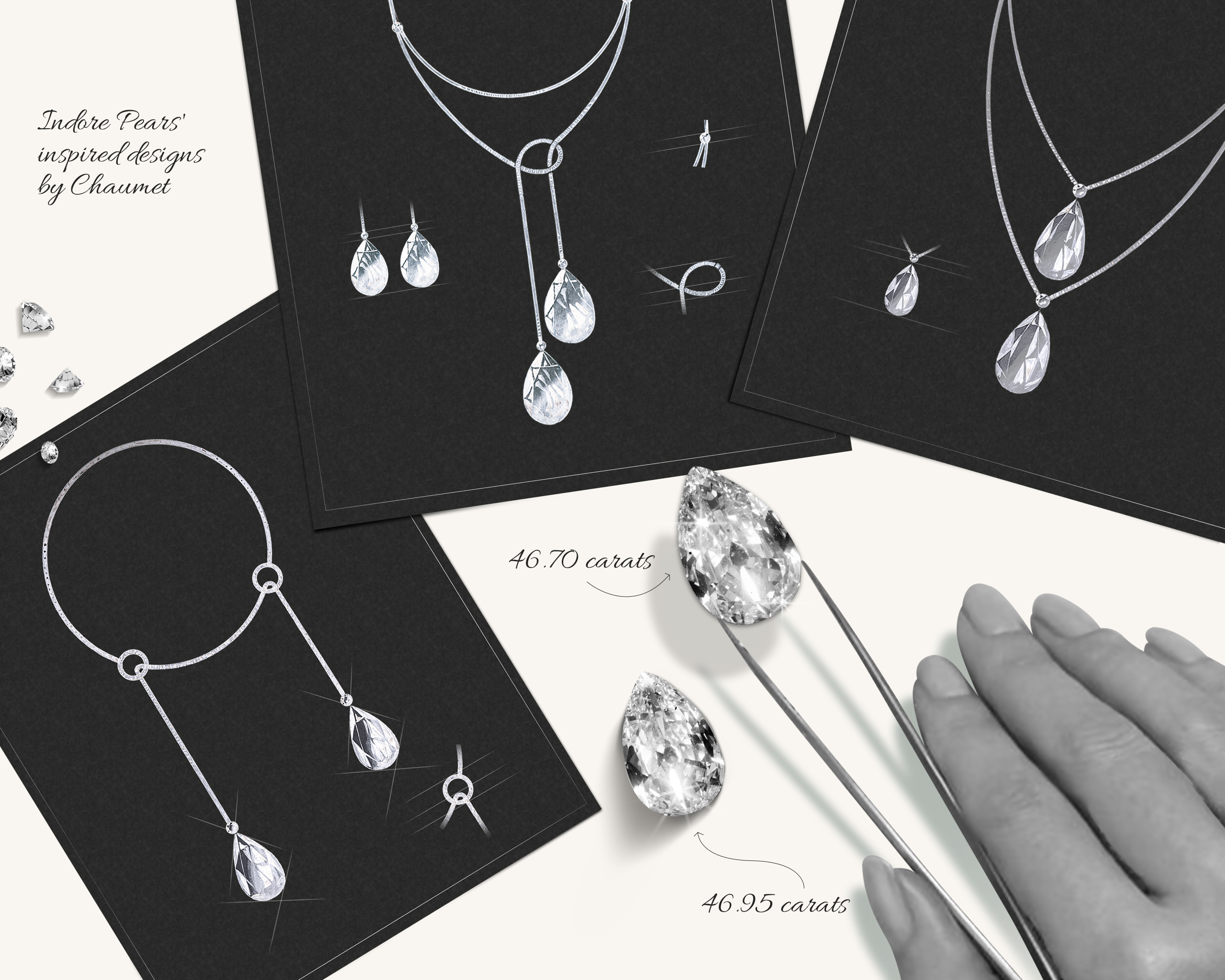
Credits: This artist rendition contains three of the original necklace designs by Chaumet.
A few years later, on a chilly October day in 1913, Tukoji Rao Holkar III visited the Paris Salon of the French jeweller Chaumet to buy a jewel for his wife. He was shown two large pear-shaped diamonds weighing 46.70 and 46.95 carats, with a sketch of a sleek necklace, in the French lavalier style [a pendant, sometimes with one stone, centred from a necklace]. The asking price? Over 631,000 Francs (Approx 268000 USD). Tukoji returned the next day to commission the necklace containing the two rare natural diamonds, later referred to as the ‘Indore Pears’.
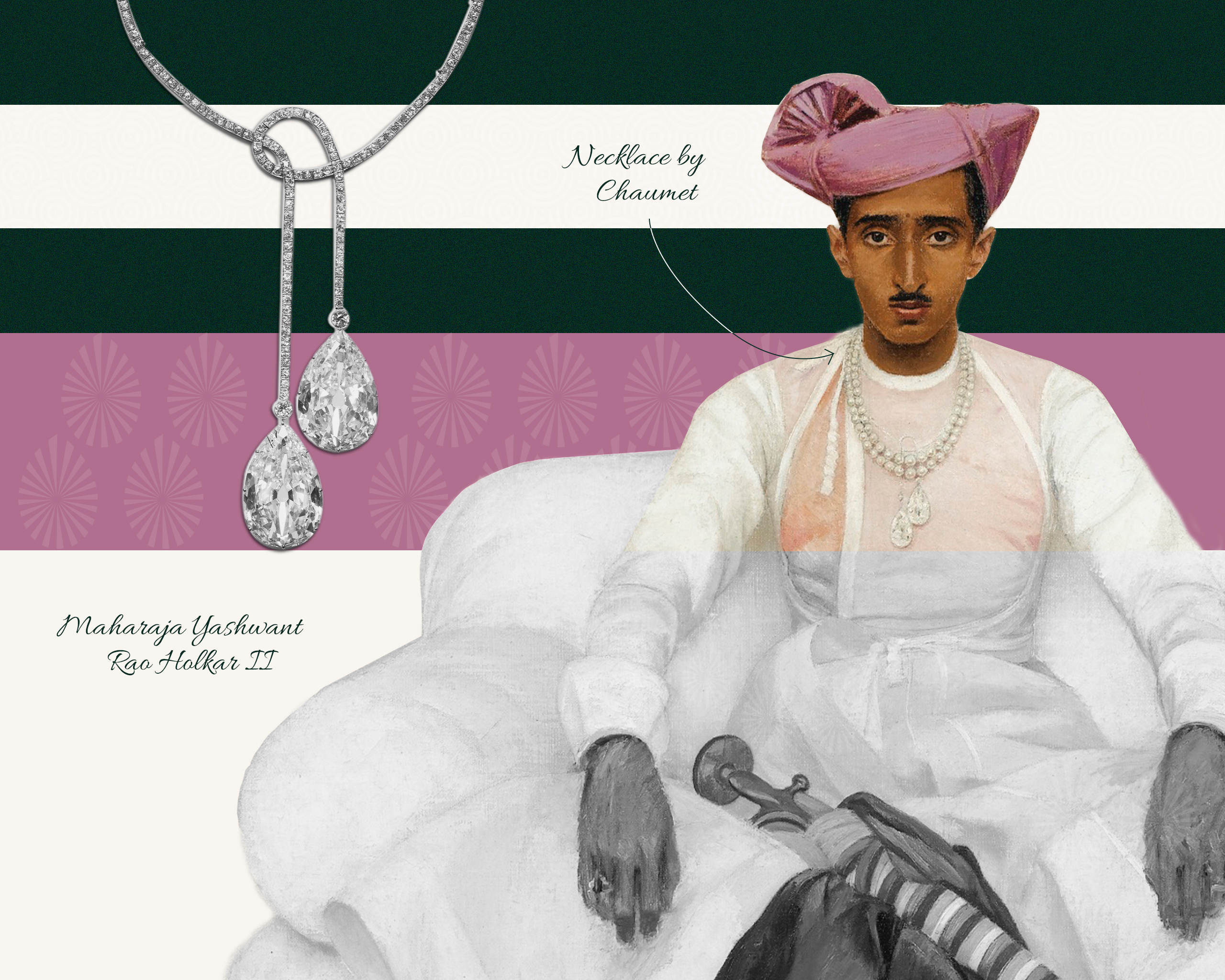
Credits: Chaumet, Wiki Commons
Transformation of The Indore Pears
Tukoji’s son, Yeshwant Rao Holkar II ascended the throne of Indore as a minor under the shadow of British influence and regency. An iconic portrait from 1933 of the young Maharaja shows him wearing the Chaumet necklace his father had purchased for his stepmother.
Both Yeshwant Rao Holkar II, and his Queen, Shrimant Akhand Sahib Soubhagyavati Sanyogita Bai Holkar, were educated in England. Their international exposure resulted in the couple developing a taste for European avant-garde culture and modernism. In 1930, Yeshwant Rao Holkar II commissioned German architect Eckert Muthesius to build an Art Moderne palace, Manik Bagh, in Indore. Keen to infuse modernity into every aspect of their lifestyle, in 1933, the young maharaja commissioned Mauboussin, a French jewellery maison that had recently won several awards (including the gold medal in 1925 at the International Exhibition of Modern Decorative and Industrial Arts), to redesign the Chaumet necklace. To realise their vision, Mauboussin replaced the fluid form of the necklace with a chunkier chain that was in line with the geometric sensibilities of the period. The discovery of diamonds in South Africa along with the advent of the machine age led to an influx of natural diamonds in an array of geometric shapes and cuts. One of the most popular diamond forms during that era was the baguette cut, which Mauboussin used generously in the new necklace for the Indore Pears. The jeweller further accentuated the natural diamonds with the contrasting green hue of an important carved emerald.1
1 Source: https://www.phillips.com/article/45862193/indore-pears-diamonds-maharaja-chaumet-mauboussin-winston-mouawad

Credits: Artist’s Rendition, Wiki Commons
The Indore Pears Legacy
India’s independence from the British Raj in 1947 caused its 565 princely states and their rulers to overnight lose their imperial position. Fearful of also losing their jewels to the newly formed Indian government, many Indian royals sold their treasures.
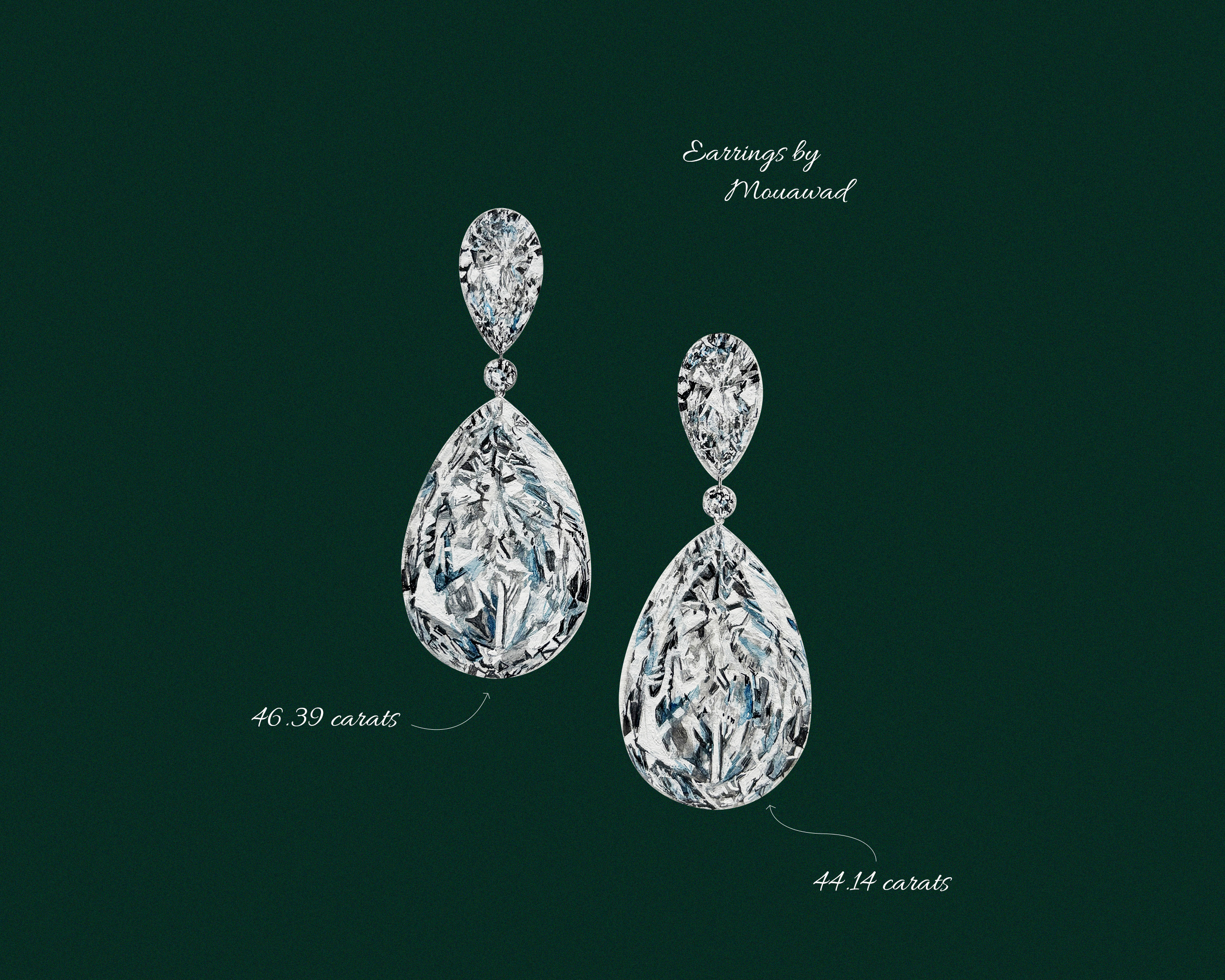
Credits: Artist’s Rendition
Harry Winston purchased the Indore Pears in 1946 and re-cut the diamonds to 44.14 and 46.39 carats. He softened the edges of the Mauboussin necklace by reverting to a fluid form for the necklace, which sat on the collarbone, hugging the base of the neck. Baguette-cut diamonds continued to adorn the piece contrasting with the large teardrop shape of the Indore Pears. Over the decades that followed, Winston sold and repurchased the natural diamonds till Lebanese jeweller, Robert Mouawad, acquired them via auction. Mouawad has set the Indore Pears as a pair of pendant earrings, and the precious stones await the next chapter of their incredible journey.
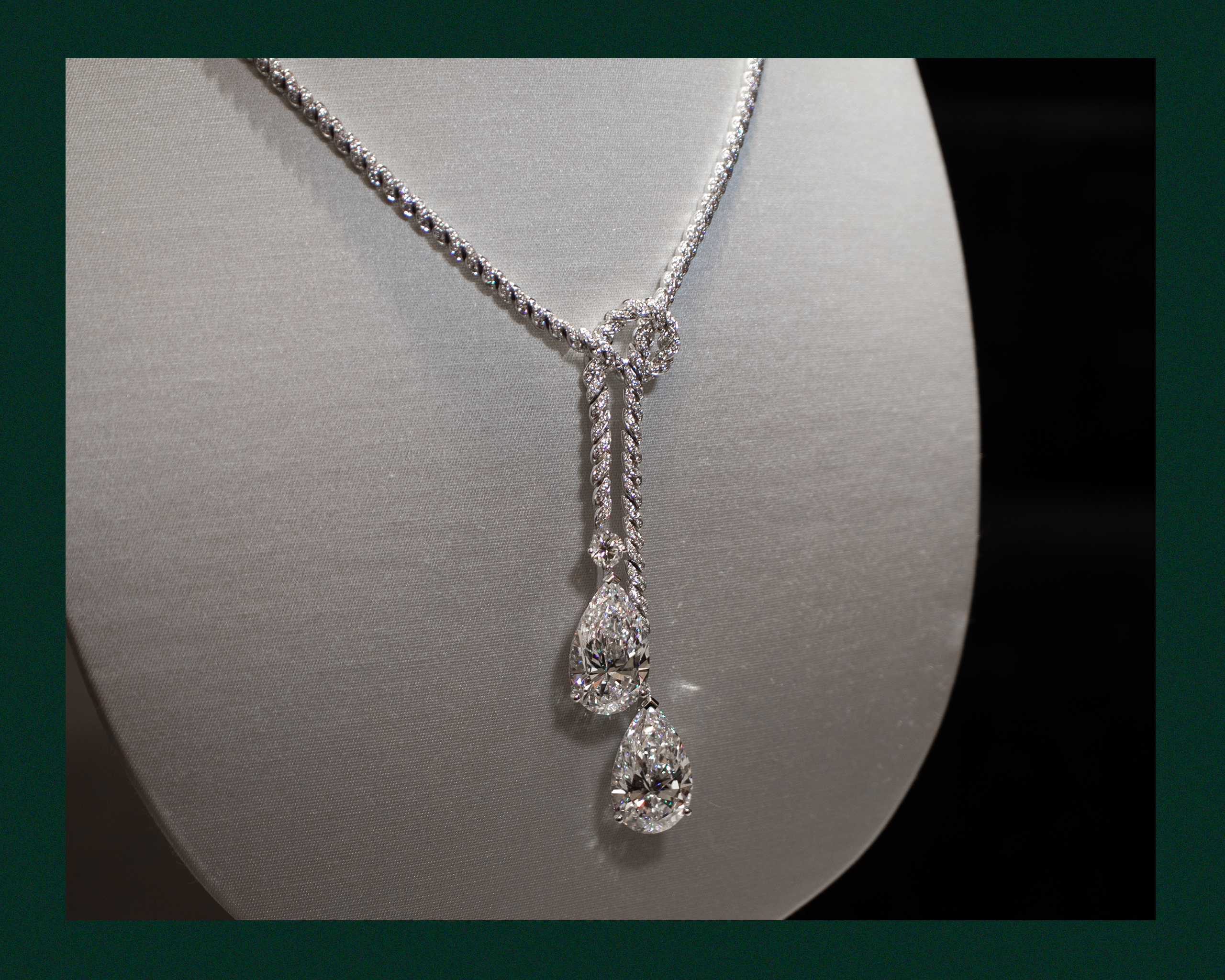
Credits: Richa Goyal Sikri
In a contemporary twist, the House of Chaumet has developed a collection of jewels and watches titled ‘Maharani de Chaumet’ that are inspired by the first necklace purchased by Tukoji Rao Holkar III in 1913. Their latest offering is an exceptional necklace in white gold, set with two D colour, Flawless, Type IIA pear-shaped diamonds weighing 11.06 and 11.05 carats supported by 636 brilliant-cut EF VVS diamonds. Type IIA diamonds contain almost no nitrogen (nitrogen responsible for the yellow in a diamond), which delivers a blindingly high sparkle. The natural diamonds have been cut from the same rough diamond that weighed 62.51 carats. While the necklace maintains the French lavalier style, Chaumet has added an extra dimension by using its emblematic fil-couteau technique to breathe new life and texture to the Maharani de Chaumet necklace, which is also reminiscent of the frieze on the Place Vendôme columns.
The enduring legacy of the Indore (diamond) Pears reminds us not only of the beauty and rarity of natural diamonds, but their ability to serve as storytellers of their keepers.
